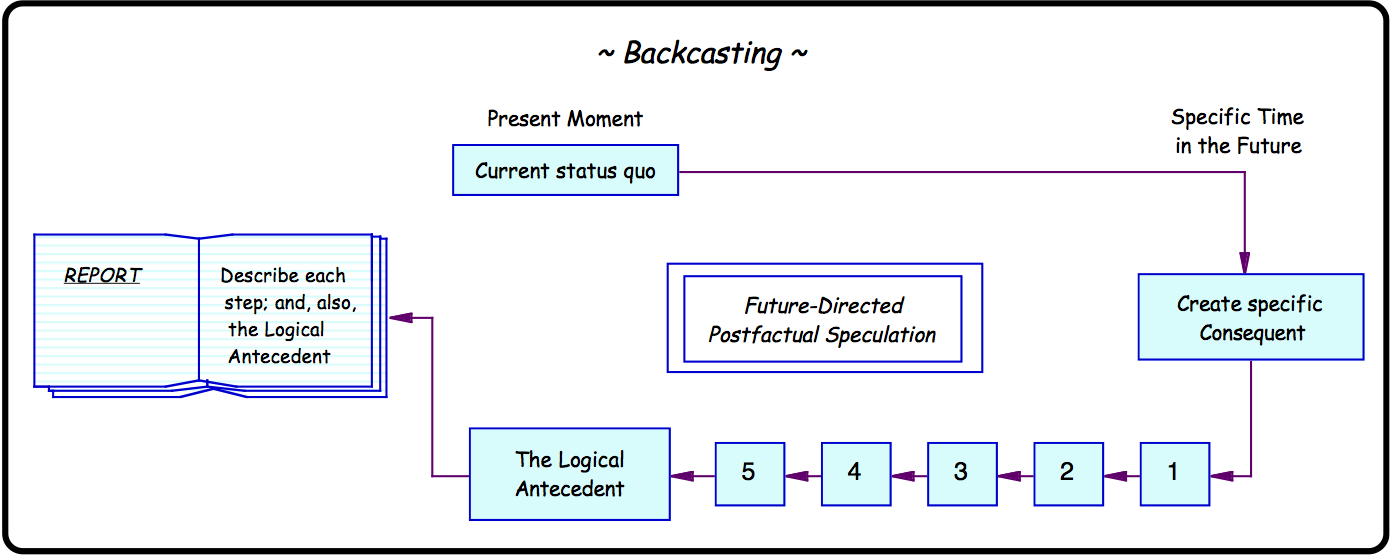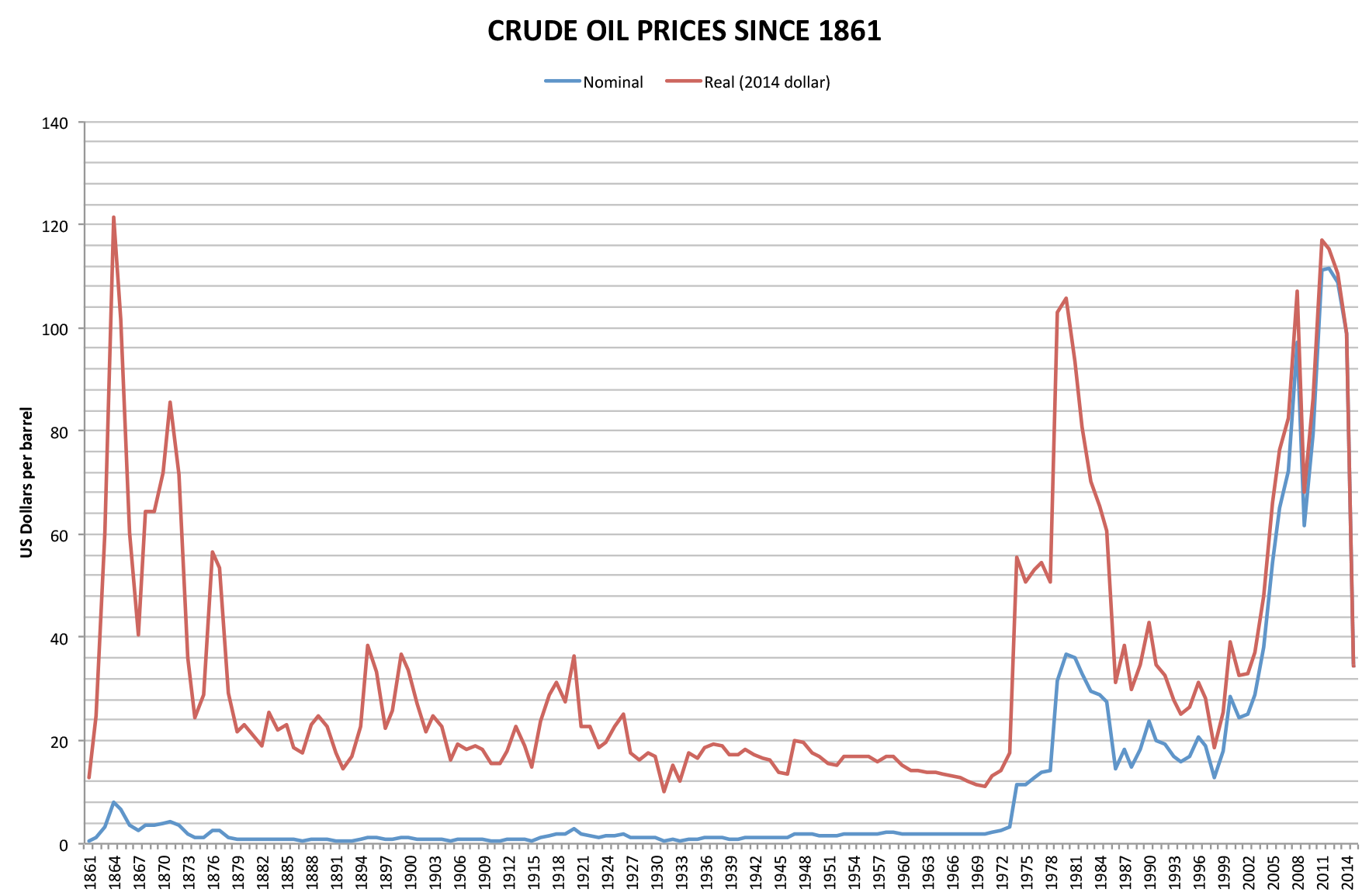|
Backcasting
Backcasting is a planning method that starts with defining a desirable future and then works backwards to identify policies and programs that will connect that specified future to the present. The fundamentals of the method were outlined by John B. Robinson from the University of Waterloo in 1990.Robinson, John B. 1990. Futures under glass: a recipe for people who hate to predict ''Futures'', vol. 22, issue 8, pp. 820–842. The fundamental question of backcasting asks: "if we want to attain a certain goal, what actions must be taken to get there?" While forecasting involves predicting the future based on current trend analysis, backcasting approaches the challenge of discussing the future from the opposite direction; it is "a method in which the future desired conditions are envisioned and steps are then defined to attain those conditions, rather than taking steps that are merely a continuation of present methods extrapolated into the future". In statistics and data analysis, bac ... [...More Info...] [...Related Items...] OR: [Wikipedia] [Google] [Baidu] |
The Natural Step
The Natural Step is a non-profit, non-governmental organisation founded in Sweden in 1989 by scientist Karl-Henrik Robèrt. The Natural Step is also used when referring to the partially open source framework it developed. Following publication of the Brundtland Report in 1987, Robèrt developed ''The Natural Step framework'', setting out the ''system conditions'' for the sustainability of human activities on Earth; Robèrt's four system conditions are derived from a scientific understanding of universal laws and the aspects of our socio-ecological system, including the laws of gravity, the laws of thermodynamics and a multitude of social studies. The Natural Step has pioneered a "Backcasting from Principles" approach meant to advance society towards greater sustainability. Whole-systems thinking and backcasting from sustainability principles form the basis for numerous applications and tools to plan and (re-)design organisational strategy, organisational processes, product/servi ... [...More Info...] [...Related Items...] OR: [Wikipedia] [Google] [Baidu] |
Futures Techniques
Futures techniques used in the multi-disciplinary field of futurology by futurists in Americas and Australasia, and futurology by futurologists in EU, include a diverse range of forecasting methods, including anticipatory thinking, backcasting, simulation, and visioning. Some of the anticipatory methods include, the delphi method, causal layered analysis, environmental scanning, morphological analysis, and scenario planning. Anticipatory thinking protocols Delphi method The Delphi method is a popular technique used in futurology. It was developed by Gordon and Helmer in 1953 at RAND. It can be defined as a method for structuring a group communication process, so that the process is effective in allowing a group of individuals, as a whole, to deal with a complex problem. It uses the iterative, independent questioning of a panel of experts to assess the timing, probability, significance and implications of factors, trends and events in the relation to the problem bein ... [...More Info...] [...Related Items...] OR: [Wikipedia] [Google] [Baidu] |
POLIS Project On Ecological Governance
Polis (: poleis) means 'city' in Ancient Greek. The ancient word ''polis'' had socio-political connotations not possessed by modern usage. For example, Modern Greek πόλη (polē) is located within a (''khôra''), "country", which is a πατρίδα (patrida) or "native land" for its citizens. In ancient Greece, the polis was the native land; there was no other. It had a constitution and demanded the supreme loyalty of its citizens. χώρα was only the countryside, not a country. Ancient Greece was not a sovereign country, but was territory occupied by Hellenes, people who claimed as their native language some dialect of Ancient Greek. Poleis did not only exist within the area of the modern Republic of Greece. A collaborative study carried by the Copenhagen Polis Centre from 1993 to 2003 classified about 1,500 settlements of the Archaic and Classical ancient-Greek-speaking population as poleis. These ranged from the Caucasus to Southern Spain, and from Southern Russia to No ... [...More Info...] [...Related Items...] OR: [Wikipedia] [Google] [Baidu] |
1973 Energy Crisis
In October 1973, the Organization of Arab Petroleum Exporting Countries (OAPEC) announced that it was implementing a total oil embargo against countries that had supported Israel at any point during the 1973 Yom Kippur War, which began after Egypt and Syria launched a large-scale surprise attack in an ultimately unsuccessful attempt to recover the territories that they had lost to Israel during the 1967 Six-Day War. In an effort that was led by Faisal of Saudi Arabia, the initial countries that OAPEC targeted were Canada, Japan, the Netherlands, the United Kingdom, and the United States. This list was later expanded to include Portugal, Rhodesia, and South Africa. In March 1974, OAPEC lifted the embargo, but the price of oil had risen by nearly 300%: from US to nearly US globally. Prices in the United States were significantly higher than the global average. After it was implemented, the embargo caused an oil crisis, or "shock", with many short- and long-term effects on the gl ... [...More Info...] [...Related Items...] OR: [Wikipedia] [Google] [Baidu] |
Information Architecture
Information architecture (IA) is the structural design of shared information environments; the art and science of organizing and labelling websites, intranets, online communities and software to support usability and findability; and an emerging community of practice focused on bringing principles of design, architecture and information science to the digital landscape. Typically, it involves a model or concept of information that is used and applied to activities which require explicit details of complex information systems. These activities include library systems and database development. Definition ''Information architecture'' has somewhat different meanings in different branches of information systems or information technology: # The structural design of shared information environments. # The art and science of organizing and labeling web sites, intranets, online communities, and software to support findability and usability. # An emerging community of practice focused on ... [...More Info...] [...Related Items...] OR: [Wikipedia] [Google] [Baidu] |
Tellus Institute
The Tellus Institute is an American non-profit organization established in 1976 with the aim of bringing scientific rigor and systemic vision to critical environmental and social issues. Tellus has conducted thousands of projects throughout the world, and now focuses on the global future and how to shape it. Background The Tellus Institute was founded as a non-profit research organization in 1976 by Paul Raskin and colleagues to conduct research on resource and environmental policy. Initially called Energy Systems Research Group (ESRG), the institute adopted its current name in 1990 to reflect its expanding focus on social-ecological systems from local to global levels ( Tellus was the name of the Roman Earth Goddess). Tellus has partnered with hundreds of organizations, notably the Stockholm Environmental Institute, with which it coordinated programs from 1989 to 2006. The institute has conducted more than 3,500 studies worldwide. The methodology of Tellus projects has been th ... [...More Info...] [...Related Items...] OR: [Wikipedia] [Google] [Baidu] |
Horizon Scanning
Horizon scanning (HS) or horizon scan is a method from futures studies, sometimes regarded as a part of foresight. It is the early detection and assessment of emerging technologies or threats for mainly policy makers in a domain of choice. Such domains include agriculture, environmental studies, health care, biosecurity, and food safety. Some sources mention HS as an alternative name for environmental scanning (ES), or view HS as a subset of ES, or at least suggest ES to have a similar goal to HS. In summary, ES has key differences to HS. ES is rather concerned to provide industry specific information for short-term decision making in a competitive environment. Etymology One of the first usages of the term ''horizon scanning'' as related to futures studies appeared in 1995 in a paper discussing trends in information technology and forecasting the year 2005. Then, ''horizon scanning'' was used to name detection and early evaluation of health care technologies in a European wo ... [...More Info...] [...Related Items...] OR: [Wikipedia] [Google] [Baidu] |
Global Scenario Group
The Global Scenario Group (GSG) was an international, interdisciplinary body convened in 1995 by the Tellus Institute and the Stockholm Environment Institute (SEI) to develop scenarios for world development in the twenty-first century. Further development of the Great Transition scenarios has been carried on by the Great Transition Initiative (GTI). The GSG's underlying scenario development work was rooted in the long-range integrated scenario analysis that Tellus Institute and Stockholm Environment Institute had undertaken through the PoleStar Project and its PoleStar System. Initially conceived in 1991 as a tool for integrated sustainability planning and long-range scenario analysis, the PoleStar System was inspired by the 1987 Brundtland Commission report ''Our Common Future'', which first put the concept of sustainable development on the international agenda. The work of the Global Scenario Group was widely adopted in high-level intergovernmental settings. The scenarios i ... [...More Info...] [...Related Items...] OR: [Wikipedia] [Google] [Baidu] |
Karl-Henrik Robèrt
Karl-Henrik Robèrt (born 1947), is a Swedish cancer scientist and an important figure in the worldwide sustainability movement. He is known for the Framework for Strategic Sustainable Development - also known as The Natural Step Framework, after the not for profit promoting and applying it - a framework that lays out the system conditions for sustainability, that arose from his consultations with municipalities, businesses, government departments, environmental organizations, and the arts community. Having secured the imprimatur of the King of Sweden, The Natural Step was launched with attendant television coverage and distribution of educational material to every school and household in Sweden. The FSSD/The Natural Step framework sets out the system conditions for sustainability, as well as guidelines to systematically approach compliance with the principles. The framework has been applied to fields as diverse as agriculture, forestry, energy systems, information and selection ... [...More Info...] [...Related Items...] OR: [Wikipedia] [Google] [Baidu] |
System Conditions Of Sustainability
A system is a group of interacting or interrelated elements that act according to a set of rules to form a unified whole. A system, surrounded and influenced by its environment, is described by its boundaries, structure and purpose and is expressed in its functioning. Systems are the subjects of study of systems theory and other systems sciences. Systems have several common properties and characteristics, including structure, function(s), behavior and interconnectivity. Etymology The term ''system'' comes from the Latin word ''systēma'', in turn from Greek ''systēma'': "whole concept made of several parts or members, system", literary "composition"."σύστημα" , Henry George Liddell, Robert Scott, '' |
North Star
Polaris is a star in the northern circumpolar constellation of Ursa Minor. It is designated α Ursae Minoris ( Latinized to ''Alpha Ursae Minoris'') and is commonly called the North Star or Pole Star. With an apparent magnitude that fluctuates around 1.98, it is the brightest star in the constellation and is readily visible to the naked eye at night. The position of the star lies less than 1° away from the north celestial pole, making it the current northern pole star. The stable position of the star in the Northern Sky makes it useful for navigation. As the closest Cepheid variable its distance is used as part of the cosmic distance ladder. The revised ''Hipparcos'' stellar parallax gives a distance to Polaris of about , while the successor mission ''Gaia'' gives a distance of about . Although appearing to the naked eye as a single point of light, Polaris is a triple star system, composed of the primary, a yellow supergiant designated Polaris Aa, in orbit ... [...More Info...] [...Related Items...] OR: [Wikipedia] [Google] [Baidu] |



